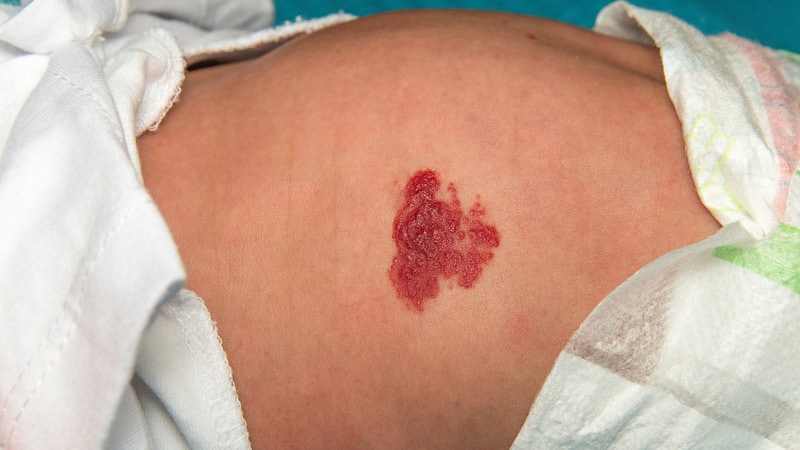TOPLINE:
Infantile hemangiomas (IH) that develop aggressive ulcerations differ in clinical features by anatomic site.
METHODOLOGY:
-
Ulcerations affect about 10%-15% of patients with IH, and a subset of patients with IH may develop aggressive ulcerations (AU) that take longer to heal, despite treatment, often resulting in soft-tissue destruction.
-
To characterize clinical features including IH morphology and anatomic distribution associated with AU, researchers at eight tertiary referral centers retrospectively evaluated 35 patients with IH ulceration who met criteria for AU.
-
They conducted chi-square goodness of fit and chi-square tests of independence to compare AU characteristics across anatomic location and IH subtypes.
TAKEAWAY:
-
Most (23%) of the 35 AU cases were segmental IH (65%), while the remaining 12 were localized (35%).
-
Among the segmental IH with AU cases, 69% presented with a thin superficial component and 69% were larger than 10 cm2 in size (P < .001 for both associations).
-
Among the localized IH with AU cases, all but one (92%) had a thick (> 3 mm) superficial component (P < .001).
-
All nine cases of diaper area IH with AU were segmental IH and had a thin superficial component (P = .19). The 10 cases of IH with AU in the head/neck area were more commonly localized (60%), had a thick superficial component (70%), and had a mixed IH morphology (60%).
-
Segmental IH with thick superficial morphology was common in the nine truncal AU cases and in the seven cases of AU on the upper extremities.
IN PRACTICE:
-
The study “identified distinct clinical phenotypes of AU,” and the findings “can lead to better recognition of patients whose IH may proceed to severe, persistent AU,” the researchers wrote.
STUDY DETAILS:
-
Esteban Fernández Faith, MD, a pediatric dermatologist at Nationwide Children’s Hospital, Columbus, Ohio, led the research. The study was published online October 16, 2023, in Pediatric Dermatology.
LIMITATIONS:
-
The small size of the study and the retrospective design.
DISCLOSURES:
-
The study was supported by the Pediatric Dermatology Research Alliance (PeDRA). Faith disclosed that he is a consultant for Verrica Pharmaceuticals, Novartis, and Canfield Scientific.
Source: Read Full Article
